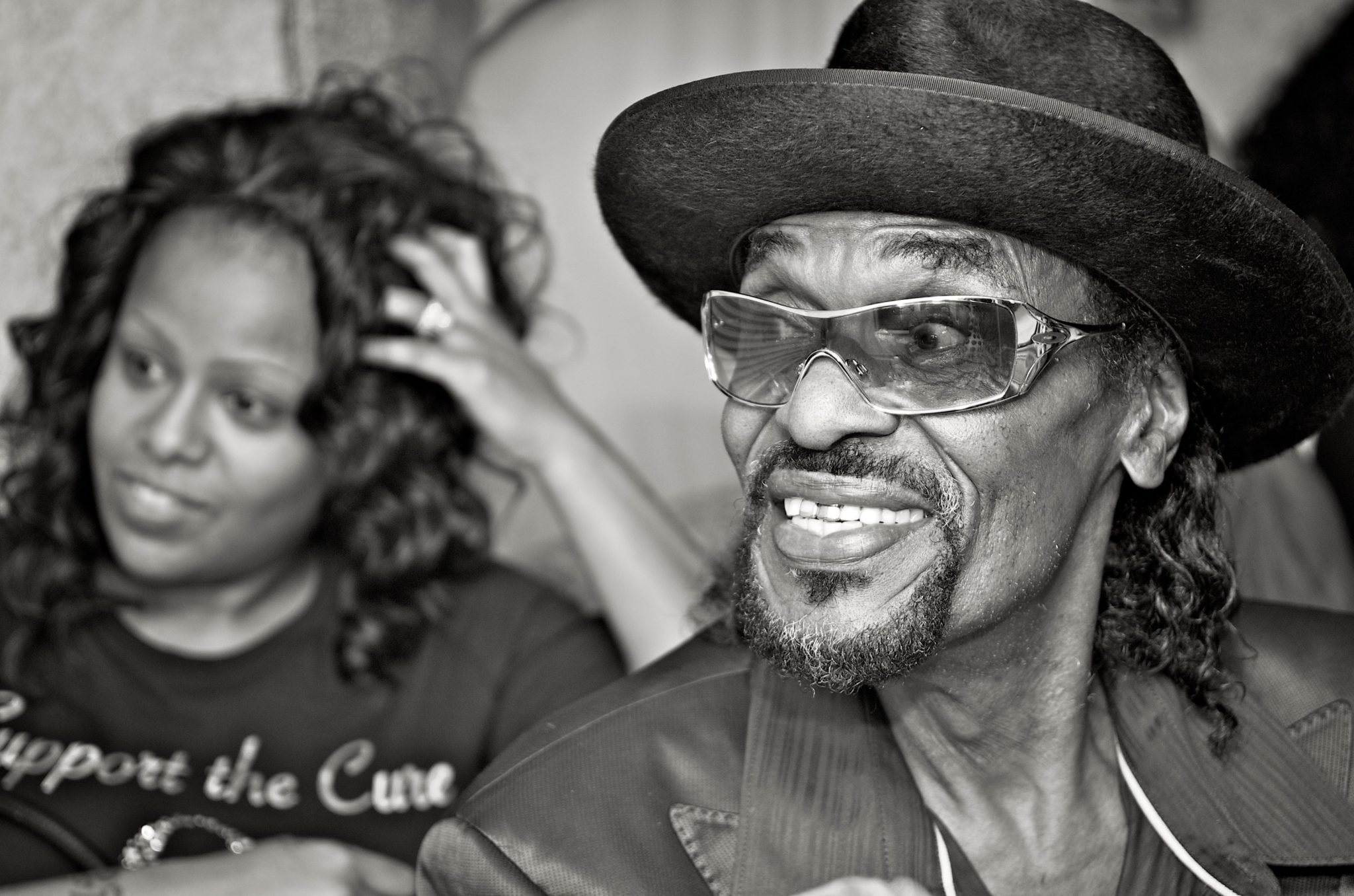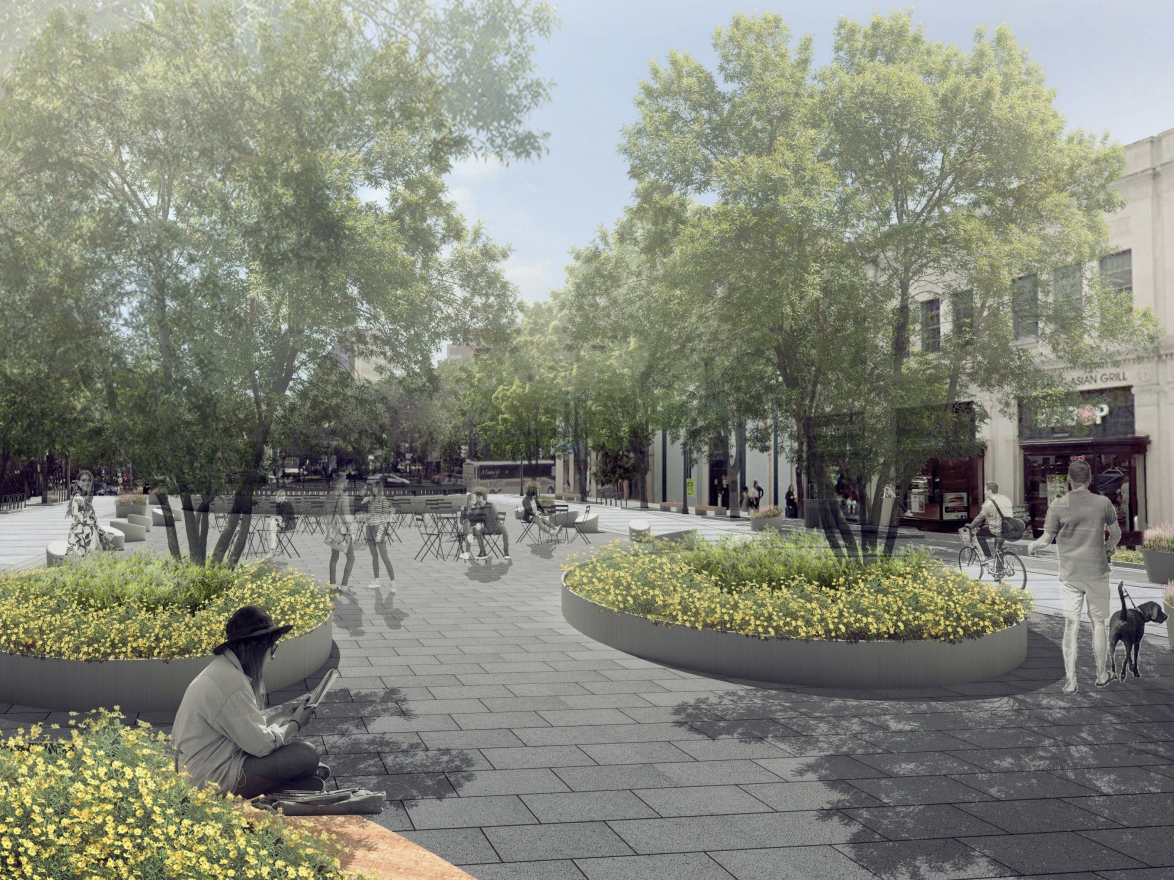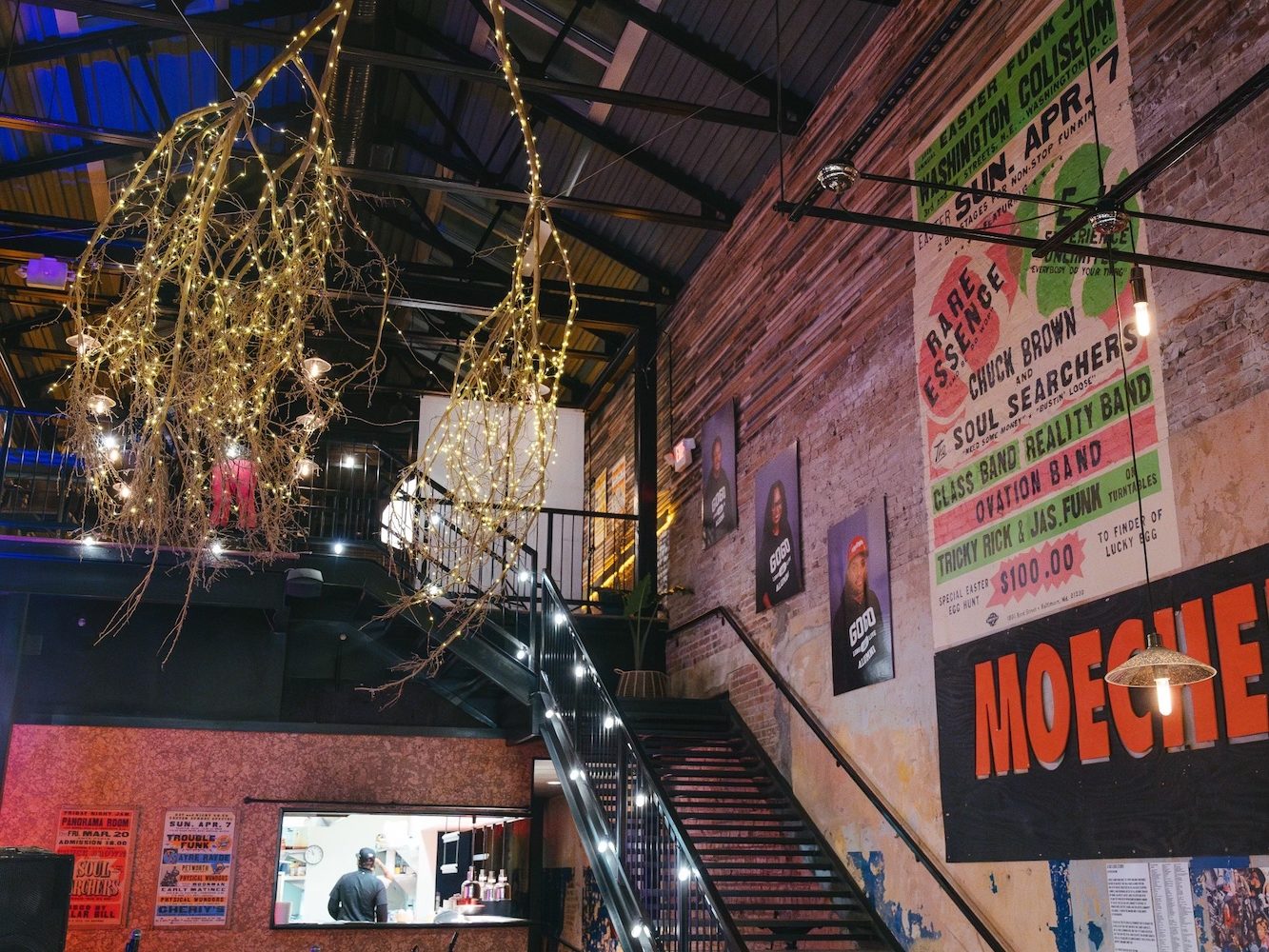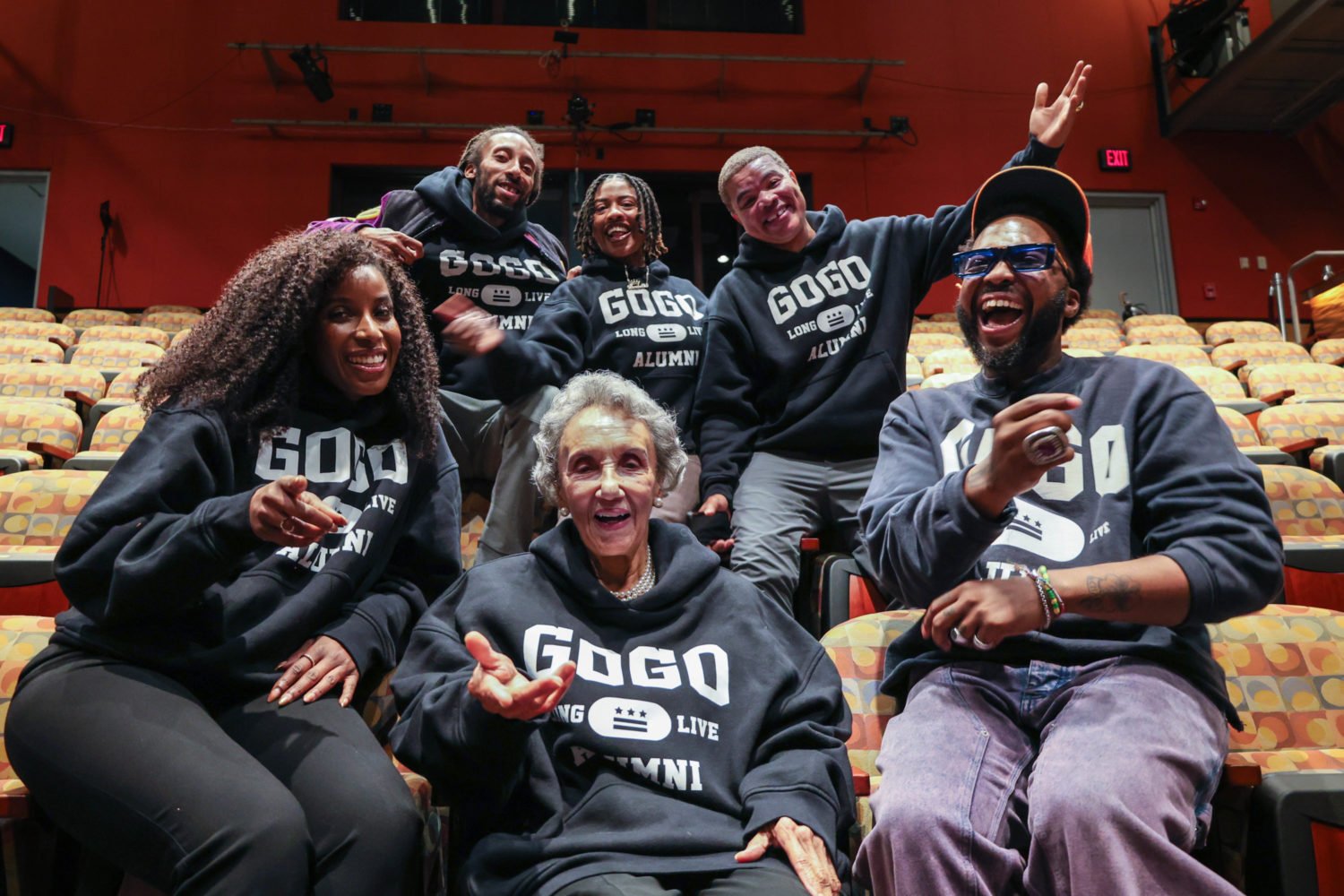Ms. Kim, head turned away, microphone extended out to the audience. DaMixx Band dancing on stage with fans. Chuck Brown sitting in a trailer with his daughter, getting ready to perform on the National Mall.
These are some of the roughly 2,000 images photographer Chip Py captured while documenting the history of go-go in DC. The DC Public Library system recently acquired the collection for its online platform The People’s Archive. Py’s photos, which each include detailed tags and captions, fill an “enormous hole” in the go-go archive, says archivist Derek Gray.
The go-go archive was created in May 2012 after Brown, dubbed the godfather of go-go, passed away. Prior to Py’s photos, the archive was mostly made up of news clippings, interview transcripts from the 80’s, and physical materials such as posters and buttons, Gray says.
“It encourages more collaboration with Chip because he’s a great storyteller, and he has such great stories for each photo. It encourages more oral histories,” Gray says. “Once we get this out, hopefully it will encourage the public to work with us in getting us more images, more photos that they may have, or other materials as well.”
The collection features photographs of Rare Essence, Backyard Band, Familiar Faces, Suttle Thoughts, Be’la Dona, and other go-go legends.
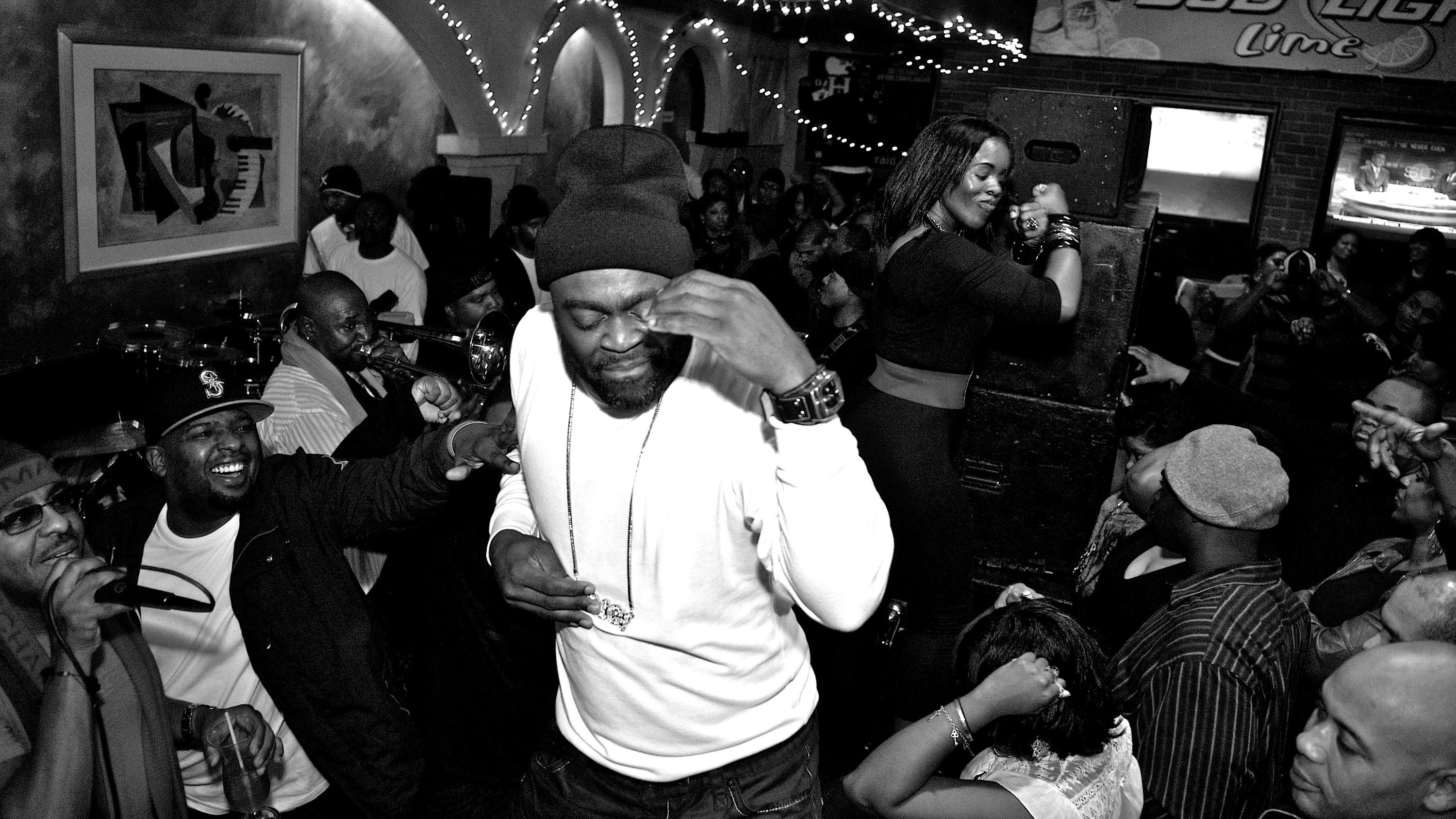
Py has been photographing the go-go scene since 2010. In this self-assigned project, he decided to create a collection of images to showcase the DC music scene. He photographed punk, rock, and bluegrass but knew go-go was the missing piece.
Py intended to spend six weeks photographing go-go spots. Instead, he spent five years on the project; he says he was out at concerts most nights of the week, often until 4 a.m.
Because he was more known in other music circles, he had difficulty at first getting in with Brown, who Py knew was “the guy” he needed. While photographing Brown from the audience, Py noticed that members of his band were in other go-go bands, so he started going to those events to earn their trust.
“Within several months, I was Chuck’s official photographer,” Py says. (Tom Goldfogle, Brown’s manager, said a couple photographers took pictures of Brown, but none of them were his official photographer.) One of Py’s photos is on display in the photo-mosaic tile wall at Chuck Brown Memorial Park, and Py photographed the last 18 months of Brown’s life.
The People’s Archive “documents the narratives of the people” of DC, Gray says. While sports and politics are important to the culture of the city, he says music is an important aspect that has been missing.
“We just want a central place for the public to be able to know the history and culture of go-go,” Gray says. “We also want to appeal to everyone, not just scholars and researchers, whether you are a diehard fan or you’re new to this city and know nothing about go-go.”
Py says there’s been a renewed interest in go-go, especially since it was named the official music of DC last year.
“People may see a go-go band performing at the Kennedy Center or at downtown venues or stuff like that, but authentic go-go is much more than that,” Py says. “It’s been an underground music scene, and there hasn’t been [much] about its history. This is important because now it’s in there. It’s in place for generations to come.”
The collection goes live on Dig DC on Wednesday, August 18.

